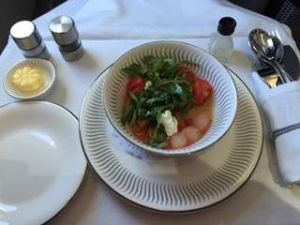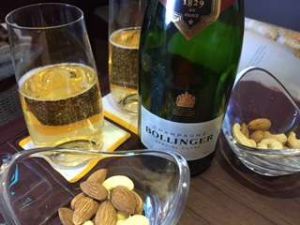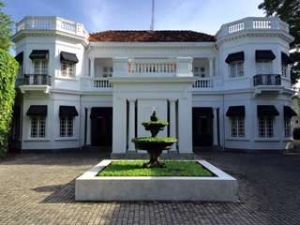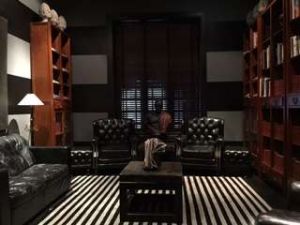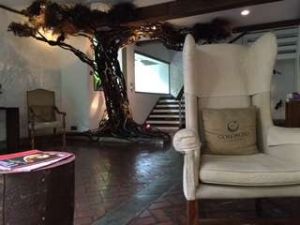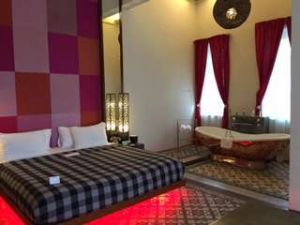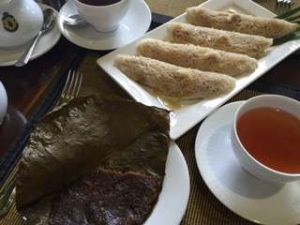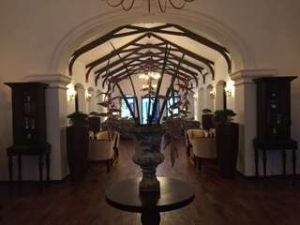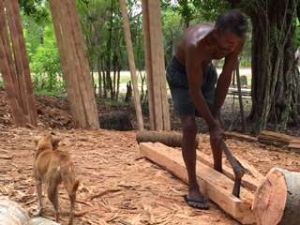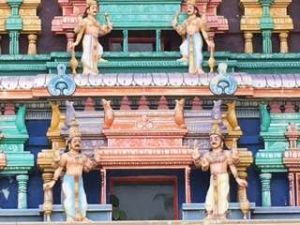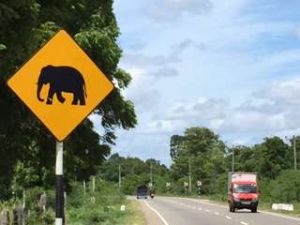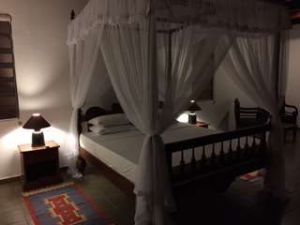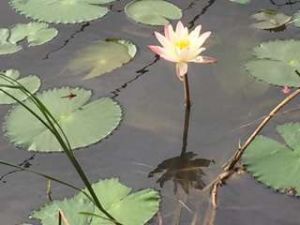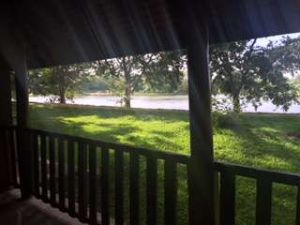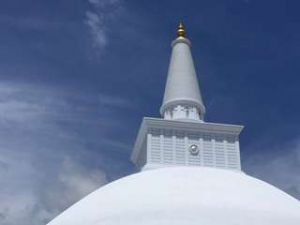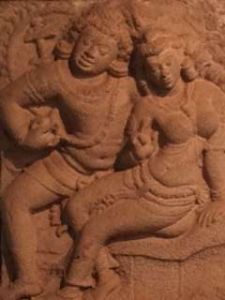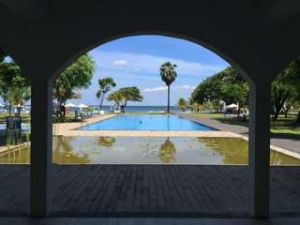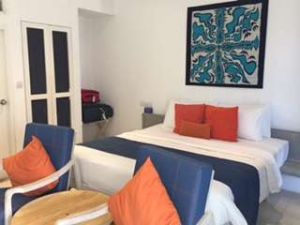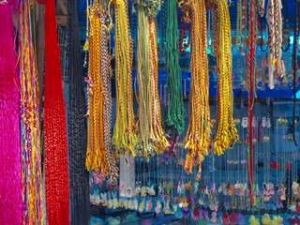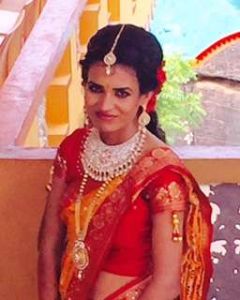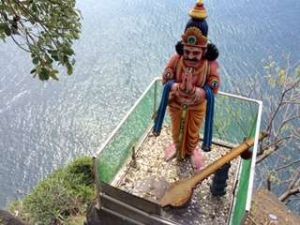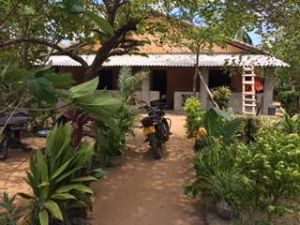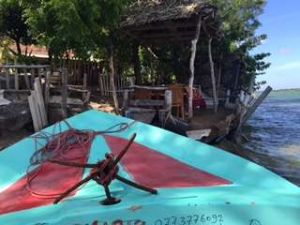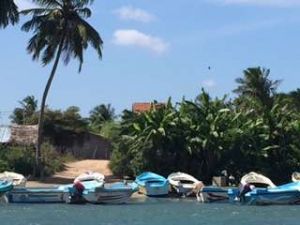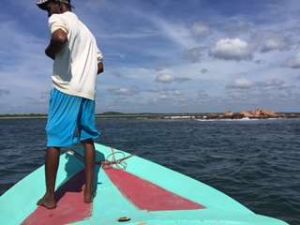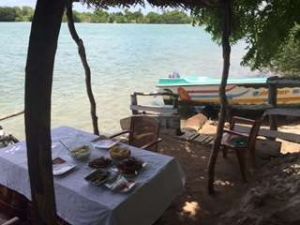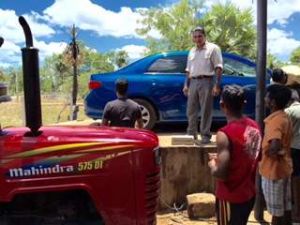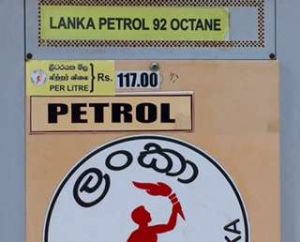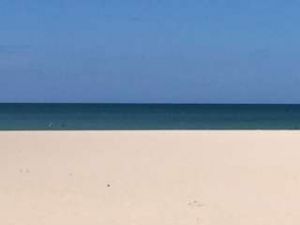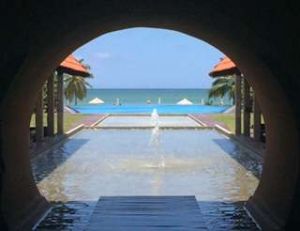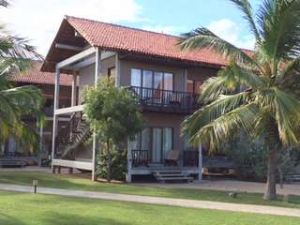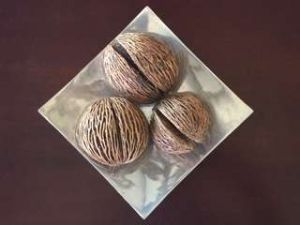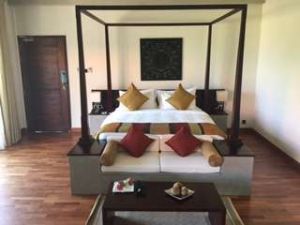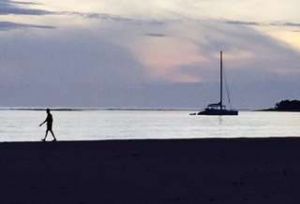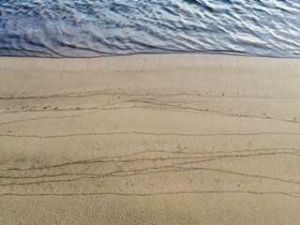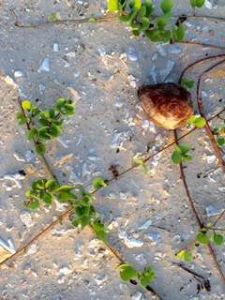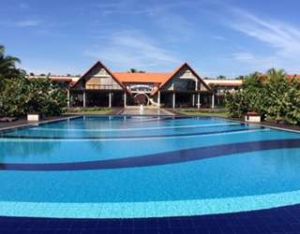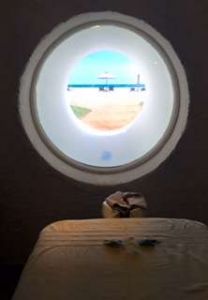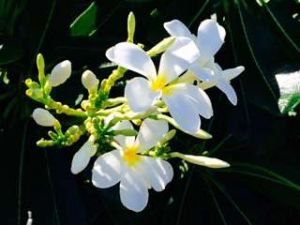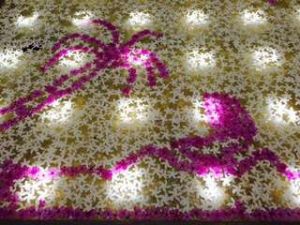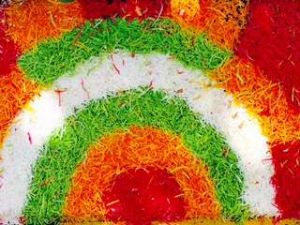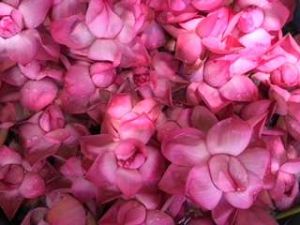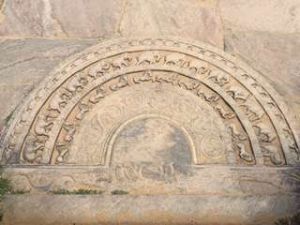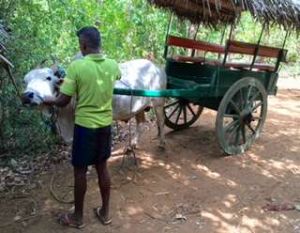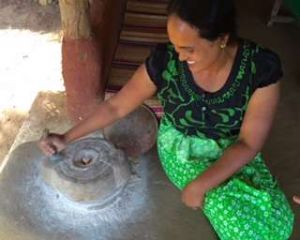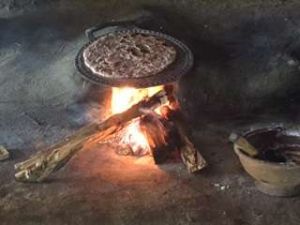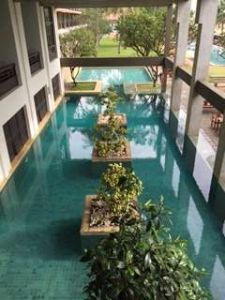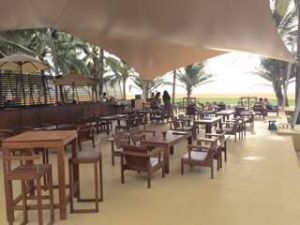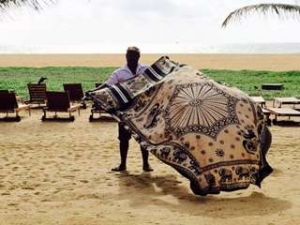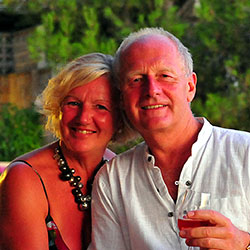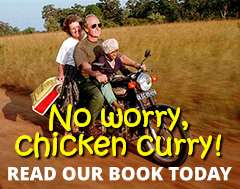Read about our daily travels through this wonderful country as we discover the west coast and previously untouched north
Each day, or whenever we had internet access, we’ve brought you our observations, ideas and comments as we travelled over a couple of weeks.
Day 1
Waking at 4am is never a good way to start a journey, especially if you’ve been up late the night before at a friend’s party – but in order to catch the 9.30am Jet Airways flight from Heathrow, our car was due to arrive at 5am.
The fine crescent new moon hung in the night sky like a freehand exclamation mark, punctuated by Mars at its brightest with no other stars in sight – was it a sign?
Jet Airways, as if to prove it, came up trumps and graciously upgraded us to Premiere – a huge bonus with superb seating that reclines into a totally flat bed, rather than the sloping half measures found on some other airlines. The flight kicked off with a pop as their house champagne is Bollinger – one of our favourites and the meal choices were varied, very tasty and elegantly presented.
The measure of all long-haul flights, in our opinion, is that they don’t feel long-haul; our Jet Airways flight dropped us in Mumbai for our onward connection feeling bright and refreshed. We’re returning through Mumbai for a few days – hence the choice of airline (as they have the connections) and we have to say that the young cabin crew made a big difference to the level of enthusiasm and service on the flight. Well done Jet Airways.
Day 2 – Colombo
Today has been spent in Colombo researching three or four really interesting boutique hotels that offer an eclectic mix of options should you wish to stay. We also tasted a Sri Lankan sweet delicacy at the Race Course. We’ll cover all of these in more detail in later posts from the UK but in summary…
Tintagel: It’s where we’re staying and simply lovely. Set in the exclusive Colombo 7 district, it has a chequered history; having been built in 1930, later becoming residence of Solomon Bandaranaike who was assassinated on its veranda and whose wife subsequently became the world’s first female Prime Minister. Latterly its where Prince Charles stayed on his visit to Sri Lanka. Its rooms are as charming as its staff.
Colombo Courtyard: A rather more modern Colombo 4, city centre 32 room hotel with large airy rooms and a nod to quirky design – in particular the winding central ‘tree’ sculpted from old bicycle forks!. A spacious sunroof is used as a restaurant in good weather whilst the main restaurant is fronted by picture windows that look out onto the main road. Good for those who want to be in the middle of it all.
Casa Colombo: An old Moorish mansion in Colombo 4 dating back two hundred years. It has twelve butler-served suites of distinctive design with large copper baths and the central courtyard area is dominated by a huge Mango tree sitting in the middle of the swimming pool. Grand but a little frayed at the edges but the manager Zacky James De Silva is a character who brings it all alive.
A short diversion to the old racecourse that throughout colonial times and up until 1958 was the main location for horse racing. After years of neglect its now been restored significantly with the old grandstand gleaming in white once again and numerous bijou cafes and shops beginning to fill it. We stopped at ‘Ceylon Tea Moment’s for a refreshing cup of ‘light tea’ accompanied by Halapa (a sweet mix of rice and ragi flour, grated coconut and honey baked in a Kanda leaf) and Lavariya (a compressed mixture of scraped coconut with treacle and rice flour)
Uga Residence: Impossible to fault this boutique hotel, in that every nook and cranny is spotless and the design and setting of the rooms, pools, common areas and buildings as a whole are enchanting. Set in Colombo 2 with ten rooms and a large impressive suite, Uga Residence transports you into a world away from Colombo’s busy streets and would make an ideal last night stopover before leaving Sri Lanka.
We’re off out for dinner at the Ministry of Crab! More tomorrow…
Day 3 – Colombo – Wilpattu – Anuradhapura
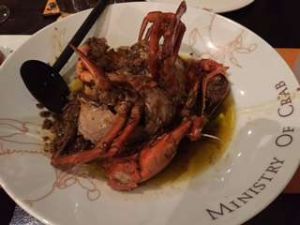 Do you really like to get stuck in to your evening meal? Well ‘Ministry of Crab’ is just the place for you. Situated in one wing of the old Dutch hospital in Colombo 1; a stone’s throw from the Kingsbury, you can’t help but get caught up in the vibrant atmosphere…and wrestling with your crab! The restaurant has been voted as being within the top 50 in Asia, but that apart its a full-on dining experience. Choose the size of crab you’d like (from about ten different weights), the preparation you desire (we were recommended a superb chilli and garlic immersion – lucky we both had it!) and then wade in. We can’t recommend it highly enough if you really enjoy being hands on with your meal in a buzzy venue. It’s ideal for a global franchise but at the moment you’ll only find it in Colombo.
Do you really like to get stuck in to your evening meal? Well ‘Ministry of Crab’ is just the place for you. Situated in one wing of the old Dutch hospital in Colombo 1; a stone’s throw from the Kingsbury, you can’t help but get caught up in the vibrant atmosphere…and wrestling with your crab! The restaurant has been voted as being within the top 50 in Asia, but that apart its a full-on dining experience. Choose the size of crab you’d like (from about ten different weights), the preparation you desire (we were recommended a superb chilli and garlic immersion – lucky we both had it!) and then wade in. We can’t recommend it highly enough if you really enjoy being hands on with your meal in a buzzy venue. It’s ideal for a global franchise but at the moment you’ll only find it in Colombo.
After breakfast this morning along with Mrs Clooney (she didn’t recognise us) we’re on the road and its been a long one. There’s a danger of just nodding off in the car as we head up the west coast but there are so many distractions along the route that highlight Sri Lankan daily life – from the guy cutting roof rafters from whole coconut palm tree trunks, to drying rice on the tarmac by the roadside and the occasional enormous and brightly decorated Hindu temple – there’s never a dull moment; including dicing with death on the roads but thankfully our driver is experienced in dodging maniacs.
After an afternoon jungle drive in Wilpattu National Park (very quiet jungle tonight) we’ve pitched up at Palm Garden Village in Anuradhapura which at face value is well put together and cleverly thought out but promises more than it delivers – jury’s out but it seems like a great idea poorly executed. Let’s re-assess it in the morning = let’s hope we’ve got hot and cold water by then!
Day 4 – Anuradhapura – Trincomalee
Well, we got hot and cold running water eventually but to be honest it was the same with the staff and service – it ran hot and cold at Palm Garden Village. The reception staff had asked our driver to deliver our bags as ‘it was dark’ when we’d arrived and were less than helpful all round. The restaurant staff however salvaged the situation. It really was a ‘village’ of forty chalets and probably is over ambitious for what its staff is willing or able to support – convenient for the location but not one of our favourites.
Our first journey today took us to the complex of Buddhist temples at Anuradhapura, original capital of the ancient kings for about 1400yrs. It’s certainly worth a visit in terms of spectacle with its saffron robe clad devotees and white clad local worshippers creating colourful religious tableaux; whilst its also an excellent example of Buddhist architecture with towering Stupa and temples around Bodhi trees – in particular the Sri Mahabodhi of over 2000yrs old. You do need to pace yourself however as you can easily suffer ‘temple overload’. The red hot pavements also got us hopping around as you’re requested to go barefoot into most Buddhist shrines. Having been here a couple of years ago we contented ourselves with the largest – Ruwanweliseya Dagoba and the ‘Loving Couple’ temple!
From there, an uneventful and steady couple of hours by car brought us to the northeast coast at Trincomalee. We simply booked into the Chaaya Blu hotel and were met, through its arched atrium area, by a broad panorama of golden beach, infinity pool and gently breaking surf – so inviting after our journey in the car. This hotel is hardly boutique luxury with its eighty or so rooms but the service is immediately superior to last night with a genuine welcome, sensible introduction, courteous staff…and the location is really hard to fault.
Despite its size it feels welcoming and generally up-together. We’re here in Trincomalee for a few days to explore other boutique hotel options and to investigate the area more; so let’s see. More of that tomorrow.
Day 5 – Trincomalee
There’s a pattern developing with our evening meals – crab again! This time they’re fresh King crabs from Jaffna and the chef’s signature dish – served with fragrant jasmine rice and crispy salad they cook in a sauce made from eighteen north-eastern spices; the blending of which is a closely guarded secret. The restaurant – not unsurprisingly called ‘The Crab’ rests on the beach at the fringes of the hotel and we dine under the rattan roof to the sound of gently breaking waves and the sipping of French wines. French wine isn’t expensive here (£20-30 / $30-45 a bottle) but nor is it necessarily fine; whereas so far, Sri Lankan wine hasn’t inspired us.
By 8.30am this morning we’re on the way into Trincomalee town to have a look around and it proves to be a disappointment. With its long narrow streets of seemingly endless ramshackle traders selling every household requirement known to mankind its neither very clean nor appealing – having lived in this environment for many years in India; its lost its novelty. Being predominantly Tamil in this area and therefore Hindu in faith, there are a couple of significant Shrines here and we take some time to go into Fort Frederick (an old colonial but still active army base) to visit Thirukonesvaram Kovli, which is the oldest Hindu Temple in Sri Lanka.
Here we enjoy a few moments watching a young couple start the marriage ritual in their elegant, brightly coloured kurta and sari before we walk to the cliff’s edge to the site of the famous ‘lover’s leap’ – let’s hope its a happy marriage! We’d recommend that you give the actual town of Trincomalee a miss as the immediate area undoubtedly offers many more appealing waterborne attractions such as snorkelling, whale watching, paddle-boarding etc. and is a safe and attractive beach resort; especially in July, August and September, when the rains are in the southwest.
We’ve arranged both snorkelling and whale watching in the next couple of days – so we’ll let you know how we get on soon.
Day 6 – Trinco
Apparently, ‘Trinco’ is how the locals refer to Trincomalee and we decided it was time to support the locals a bit more directly, rather than simply enjoying the more sanitised pleasures of hotel life.
Last night we wandered along the beach – and back – and back again – comparing menus, numbers of diners and general ambience, before deciding on a beachfront restaurant that we’d seen at the outset. A cold beer and a mixed platter of some freshly barbequed fish, prawns, squid and the inevitable crabs, with a smattering of rice and salad was more than adequate for us and after a stroll back along the shore we settled down for the night.
Today we left the hotel at 8.30am and travelled a short distance to Nilaveli (Blue beach) where we picked up a local fisherman to take us snorkelling at Coral Island. In this area, Pigeon Island is the one most tourists go to but local knowledge suggests that the coral is more diversely coloured and the viewing much better at Coral Island (as the name hints at perhaps) than at its slightly larger sister island. As an aside; if you consider snorkelling when in Sri Lanka, we suggest that you either bring or purchase your own mask and snorkel as the condition of the ones we were offered wasn’t up to scratch. Flippers are more inconvenient to carry and are less of an issue with regards hygiene if you use those supplied.
The trip out to sea in a eight metre open boat was uneventful and within fifteen minutes we’d dropped anchor and were also dropping over the side. Coral Island is about 1km in circumference – or at least the random collection of rocks is about that. We were unfortunate to have wind against tide that whipped up a short chop on the water, making it a bit if a nuisance to clear the snorkel regularly and the water as a result wasn’t as clear as it could have been. This might not have been such a problem around the higher Pigeon Island. However, once we were in the lee of the island the water was shallower (about 1m) and clearer and it was here that we truly appreciated the diversity of coral types and colours together with the beautiful fish life that inhabit it. We returned to the boat after about an hour, albeit we could have easily doubled this if the water had been clearer.
We then headed back to the fisherman’s house, where his mother had prepared a superb spread of freshly caught fish that included, we were informed, a large Mullet. We’re not experts and there are nearly 80 species of Mullet so weren’t about to argue but felt it was something different – perhaps you can identify it from the photo? Nevertheless the spread was really welcome and quite delicious after our exercise and sitting by the side of the lagoon in the little shack with a beer in hand, we felt as though we were at least sampling a touch of local village life and bringing some cash directly into the local economy.
Tomorrow we’re off before crack of dawn to go whale watching (or whale searching perhaps) – let’s see!
Day 7 – Trincomalee – Dolphins at dawn
A 5am start isn’t something we make a habit of but always wish we did when greeted by a sky infused with the first blush of yellow. The hotel is quiet with only a couple of other souls enjoying the tranquillity as we board the little fishing boat from our beach.
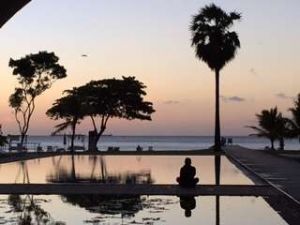
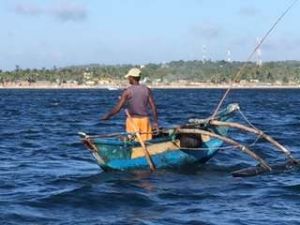 Heading off towards Lovers’ Leap and then out to sea for about a kilometre, the rising sun steadily illuminates the colours of the other craft on the water and the beach we’re leaving in our wake.
Heading off towards Lovers’ Leap and then out to sea for about a kilometre, the rising sun steadily illuminates the colours of the other craft on the water and the beach we’re leaving in our wake.
There are about six other boats congregating and racing across the water at various times in search of the elusive whales but we’re destined not to see any this morning.
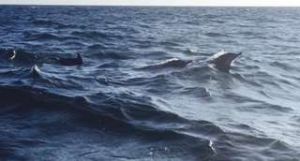
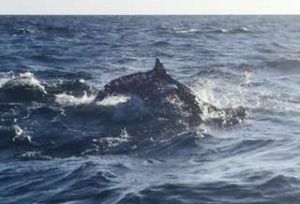 We are rewarded however with a large pod of dolphins cavorting in the choppy waves around us – always a thrill to see these magnificent creatures in their element. After a couple of hours on the water we return to the beach and breakfast before heading out on a recce of a few hotels.
We are rewarded however with a large pod of dolphins cavorting in the choppy waves around us – always a thrill to see these magnificent creatures in their element. After a couple of hours on the water we return to the beach and breakfast before heading out on a recce of a few hotels.
Of those we see, there are only two of note that we would consider recommending – each for different reasons.
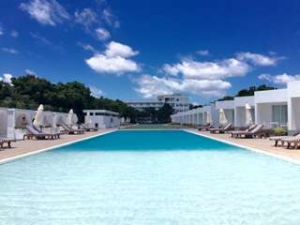
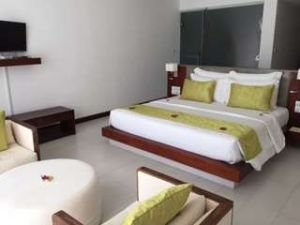 Firstly is the imposing and modern ‘Anilana’ on Nilaveli beach. As we draw up in our car it gives us the impression that we’ve arrived at a government institution but on entering this perception is transformed by the spacious, open, airy and crisp appearance of all we see. Rooms are split between those adjacent to the poolside (which has echoes of art deco with its angular, bright white architecture and simple lines) with their open air showers and smart décor and the more boxlike main building whose rooms still present well. The fifty four rooms almost make it too big to be boutique but Anilana offers a stylish alternative to run of the mill hotels and would certainly give you a sense of being somewhere a little bit special. Dining is buffet style with full occupancy, reverting to a la carte with reduced numbers.
Firstly is the imposing and modern ‘Anilana’ on Nilaveli beach. As we draw up in our car it gives us the impression that we’ve arrived at a government institution but on entering this perception is transformed by the spacious, open, airy and crisp appearance of all we see. Rooms are split between those adjacent to the poolside (which has echoes of art deco with its angular, bright white architecture and simple lines) with their open air showers and smart décor and the more boxlike main building whose rooms still present well. The fifty four rooms almost make it too big to be boutique but Anilana offers a stylish alternative to run of the mill hotels and would certainly give you a sense of being somewhere a little bit special. Dining is buffet style with full occupancy, reverting to a la carte with reduced numbers.
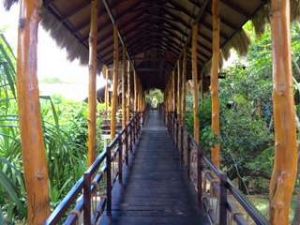
 Secondly is the definitely boutique Uga Jungle Beach, which has taken full advantage of the lush greenery around it and the proximity of the beach to create a very sophisticated jungle lodge experience. The forty eight rooms are all of similar design and differ only by their location around the beach or lagoon and whether they have a private pool or not. Being distributed almost out of sight of one another, you get the distinct impression that you’re almost alone in the jungle; a sense supported by the wooden walkways and hanging greenery at every corner. Dining is completely a la carte and whilst we were there a guest was participating in a tuition session with one of the chefs.
Secondly is the definitely boutique Uga Jungle Beach, which has taken full advantage of the lush greenery around it and the proximity of the beach to create a very sophisticated jungle lodge experience. The forty eight rooms are all of similar design and differ only by their location around the beach or lagoon and whether they have a private pool or not. Being distributed almost out of sight of one another, you get the distinct impression that you’re almost alone in the jungle; a sense supported by the wooden walkways and hanging greenery at every corner. Dining is completely a la carte and whilst we were there a guest was participating in a tuition session with one of the chefs.
We’d be happy to stay in either of the above recommends, as we have been the Chaaya Blu, which we sadly leave tomorrow to head off on a two and a half hour drive towards Pasikuda. More of that tomorrow.
Day 8 – Trincomalee – Pasikuda
We never thought concrete could be ‘cool’. Normally its an environmental blot on the landscape in ecologically sensitive places with little to excuse its use.
Our journey to Pasikuda is marked only by a flat tyre, discovery that fuel is virtually half what it costs in UK and a reminder that men and bicycles carry seemingly impossible loads. The landscape itself is reminiscent of arid rural India with wide flat expanses of coastal scrub interspersed with ramshackle hamlets – and this area was ravaged during the civil war – but our arrival at Pasikuda shows little sign of this remaining and makes it all worthwhile.
For a while we skirt bleached white beaches that draw a perfect baseline to the azure sea and dazzling blue sky, until reaching Uga Bay, our base for the next three nights.
Its here that we’re amazed by the initially austere concrete that has been crafted into impressive villas with tiled rooves and beautifully minimalist but elegant rooms. First impressions as we pass through the interesting tube entrance and into the airy reception and bar are that ‘Uga’ are beginning to prove reliable as individual luxury resorts for even the most jaded luxury travellers.
It’s immediately apparent that a talented designer has had both hand and heart in Uga Bay as opposed to simply being tasked with assembling smart room interiors. We do little more than change into our swimming gear, head for the beach bar and perch ourselves under the shade of a palm tree with a beer in hand and a platter of grilled giant prawns in front of us. Our miscalculation with the ‘happy hour’ means that buy one/get one free, is in fact buy two/get one free, so we’re left with little choice but to spend the afternoon lazing on the beach and around the pool.
Tomorrow, when we’re brighter, we’ll explore what Uga Bay has to offer in more detail.
Day 9 – Pasikuda Beach
A long hike along the beach before dawn, to avoid the heat of the sun, seemed a good idea last night – less so at 5 a.m. this morning! Having dragged ourselves out, however, the air was still a beautifully balmy temperature and the sky was already getting lighter over the sea.
We wanted to put Pasikuda into to context with its adjacent areas and no sooner had we left the swathe of white that is the crescent of Pasikuda beach than the sand turned to sharp broken coral and rocky outcrops with coconut palm plantations reaching the shoreline.
We carried on into the bay which forms a natural harbour and other than saying ‘hi’ or ‘hello’ about fifty times to the really friendly kids and people in a little fishing village that we walked through, the rest of the walk was uneventful – to the extent that we hailed a tut-tut to bring us back along the road we’d reached; to the Uga Bay hotel where we’re staying.
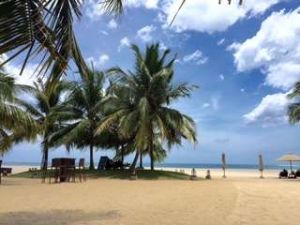
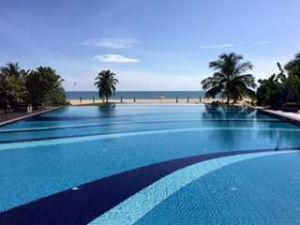
 Uga Bay continues to impress; not only with its facilities but also the quiet efficiency of its staff and almost personal, attentive but not intrusive service that surely is one of the hallmarks of a ’boutique’ hotel; despite its forty eight rooms. We fancied chapattis with our Sri Lankan dinner last night and curd with treacle (delicious buffalo milk yoghurt and treacle made from the flower sap of the Kittul tree) this morning for breakfast, which were both ‘off menu’ and they were provided without question and with good grace. Although main dining is available at the beach bar ‘King Coconut’ as well as a la carte and buffet, for once we were tempted by the buffet and have to say its one of the tastiest and freshest buffets we’ve ever had – full marks to Uga Bay for turning what is normally a bland endurance into a pleasant experience.
Uga Bay continues to impress; not only with its facilities but also the quiet efficiency of its staff and almost personal, attentive but not intrusive service that surely is one of the hallmarks of a ’boutique’ hotel; despite its forty eight rooms. We fancied chapattis with our Sri Lankan dinner last night and curd with treacle (delicious buffalo milk yoghurt and treacle made from the flower sap of the Kittul tree) this morning for breakfast, which were both ‘off menu’ and they were provided without question and with good grace. Although main dining is available at the beach bar ‘King Coconut’ as well as a la carte and buffet, for once we were tempted by the buffet and have to say its one of the tastiest and freshest buffets we’ve ever had – full marks to Uga Bay for turning what is normally a bland endurance into a pleasant experience.
Pasikuda beach itself is protected by an off lying reef that breaks the main impact of the incoming waves to make for a sheltered and tranquil bay. If an escape into sun, sea and sand is what you’re looking for then Pasikuda and Uga Bay must surely be hard to beat – but if you aren’t tempted by the catamaran sailing and snorkelling or the jet ski and spa; then you might find the area slightly limiting as its a good one and a half to two hour drive to any notable site of interest.
Pasikuda is probably ideal for a few days of simple pleasure and relaxation at the end of a hectic itinerary, where you’re more than happy simply to stay in your hotel. Tomorrow we’ll investigate six alternatives to Uga Bay of the twelve hotels that skirt the beach –
and then let you know which one we’d choose overall.
Day 10 – Top Luxury Boutique Hotel in Pasikuda
Uga Bay wins hands down!
Concrete on a grand scale is the vernacular in Pasikuda Hotels but fluency in the language varies significantly.
Of the dozen or so hotels already open or under construction in Pasikuda, since the ravages of both war and Tsunami, one would have thought it was an opportunity to prove what can be done with a clean slate.
Unfortunately some have succumbed to the use of concrete as a cheap and rapid form of construction with little concern for design and empathy with the surroundings; whereas others have used it as a design medium, creating stylish solutions to modern beach hotel parlance.
Concrete, of course, isn’t everything. There are countless factors that contribute towards an outstanding luxury hotel – but most of them boil down to ‘soul’.
For us at TLC, the welcome we receive, the attention that’s given or offered without asking, the efficiency of the service, the cleanliness of the rooms, the attitude of the staff, the standard of cuisine, the maintenance of the facilities and the choice available, the overall design and ambience – all wrapped up and bonded with a certain ‘je ne sais quoi’ that you instinctively know tips the scale into excellence.
Before choosing our ‘Top Pasikuda Hotel’ we visited and reviewed nine in total, the others either incomplete or not ‘Boutique’ (Boutique in Sri Lanka is regarded as under fifty rooms). We should state that although we evaluated most of the facilities, rooms, pools and settings together with overall welcome we did not stay in all of these hotels – and therefore you might question our judgement – but in our experience first impressions really do count and its subsequent actions that add or detract from these – and it’s not often that we ever find that a sub-par first impression is recovered by subsequent events. Right or wrong, at least you know how we worked in this case!

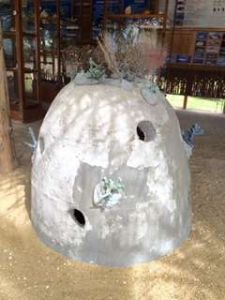 Of those we saw there were two or three runners-up with merits that were worthy of note. Maalu Maalu offers a more Bohemian luxury and involves itself with local communities and coral regeneration but lacked something in its welcome, layout and attention to detail. Anilana, a large edifice that shares its design heritage with its sister in Trincomalee is impressive with its room design but lacks warmth; like its sister owing more to a modern theatre in its presentation than a hotel.
Of those we saw there were two or three runners-up with merits that were worthy of note. Maalu Maalu offers a more Bohemian luxury and involves itself with local communities and coral regeneration but lacked something in its welcome, layout and attention to detail. Anilana, a large edifice that shares its design heritage with its sister in Trincomalee is impressive with its room design but lacks warmth; like its sister owing more to a modern theatre in its presentation than a hotel.
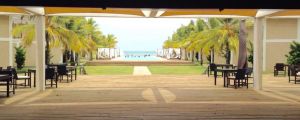 Sun Aqua, the chain based in the Maldives, comes close as well with a sprawling collection of thirty-six rooms and associated facilities that are distinctive and stylish but overall the layout for us lacked cohesion as a single entity resulting in a fragmented approach to the welcome, smooth running and service.
Sun Aqua, the chain based in the Maldives, comes close as well with a sprawling collection of thirty-six rooms and associated facilities that are distinctive and stylish but overall the layout for us lacked cohesion as a single entity resulting in a fragmented approach to the welcome, smooth running and service.
So, when all is said and done Uga Bay remains for us the current standard by which others are judged.
From the layout and overall design of the hotel and its grounds, with the palm grove and grassy gardens that lead to the sea; the natural sub-division of areas, whether internally with the bar, restaurant, reception – or the pool, beach bar and sunbathing areas all embraced by the collection of two storey lodges that obliquely face the sea; it’s almost impossible to fault Uga Bay. There’s also a magnificent two double room Beach Villa suite with its own pool and secluded garden nearing completion – ideal for a family or two couples.
 At TLC we feel that ultimately its t.l.c. (in this case, ‘tender loving care’) that sets Uga Bay apart and gives it ‘soul’ that is greater than the sum of its parts. There’s an intangible excellence that pervades every aspect of the hotel and its staff – from the top down – a pride in what they do and how they do it that, for us, sets it apart from any other hotel in Pasikuda.
At TLC we feel that ultimately its t.l.c. (in this case, ‘tender loving care’) that sets Uga Bay apart and gives it ‘soul’ that is greater than the sum of its parts. There’s an intangible excellence that pervades every aspect of the hotel and its staff – from the top down – a pride in what they do and how they do it that, for us, sets it apart from any other hotel in Pasikuda.
Well done Uga Bay – long may it continue!
Day 11 – Pasikuda – Polonnaruwa – Minneriya – Sigiriya
While Buddha reclines, elephants gather!
What a day. We left Uga Bay reluctantly early this morning and set off for the two hour journey to the Central Northern Province and Polonnaruwa – historic capital of the ancient kings from 11th-13th centuries AD. This ruined city is of huge significance to the Buddhist faith and some remarkable statues of the Lord Buddha are to be found in sitting, standing and reclining positions amidst the numerous Stupa and ruined civil buildings. We had visited before so restricted our visit but you’ll need a good couple of hours. minimum, if you wish to get even a basic feel of the complex and museum.


 We find a lot of the peripheral activities of interest at sites like this such as the lotus bloom and paan sellers, the colourful Buddhist flags and small but significant details such as the circle of life at the entrance to many major shrines.
We find a lot of the peripheral activities of interest at sites like this such as the lotus bloom and paan sellers, the colourful Buddhist flags and small but significant details such as the circle of life at the entrance to many major shrines.
From here we travelled on for another hour or so in order to book into one of our favourite hotels – Vil Uyana – which at first glance is more akin to an elegant ashram but as you explore evolves into a luxurious collection of ‘floating’ pavilions, or ‘dwellings’, nestling amidst the paddy fields that surround the central buildings. There’s an easy charm and calm to this hotel (we hesitate to call it a hotel. as we feel as though we’ve been welcomed into an extensive private home) and we feel immediately relaxed as we’re shown to our beautiful room that’s a study in three levels of wooden floors, high rattan roofline, sumptuous soft furnishings and endless simple but elegant touches that underline that someone has thought this through as if they would wish to stay here themself.
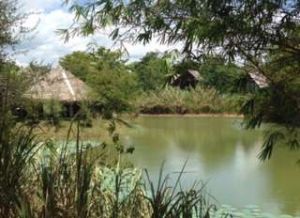

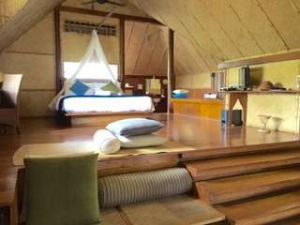 We don’t have time to immerse ourselves into the inviting private plunge pool on the deck outside our door and have to leave it to the Monitor Lizard to sip at its edge as we leave for an afternoon game drive at Minneriya National Park – it’s the time of the Elephant Gathering!
We don’t have time to immerse ourselves into the inviting private plunge pool on the deck outside our door and have to leave it to the Monitor Lizard to sip at its edge as we leave for an afternoon game drive at Minneriya National Park – it’s the time of the Elephant Gathering!
Each year as the waters recede within the ancient man-made ‘tanks’, new shoots of grass sprout and become an irresistible magnet for herds of elephant who have become increasingly deprived here in the north as they await the rains.

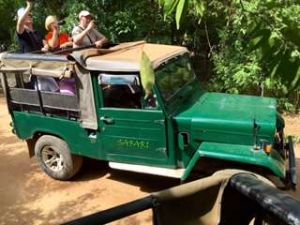
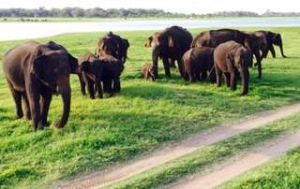 Within half an hour of entering the park we’re on the expansive green plains of the drying tanks and surrounded by elephant. We count at least three herds of about forty or so elephant of all ages – from rubber-trunked infants to belligerent males; one of whom appears to be in musth and fancying his weight. The jeep drivers, of whom there are many, are nevertheless respectful of both grassland and priority of the elephants over humans – and with the exception of the elephant in musth who fancies his chances with a couple of jeeps that steer well clear of him – the two groups appear to accommodate one another quite well.
Within half an hour of entering the park we’re on the expansive green plains of the drying tanks and surrounded by elephant. We count at least three herds of about forty or so elephant of all ages – from rubber-trunked infants to belligerent males; one of whom appears to be in musth and fancying his weight. The jeep drivers, of whom there are many, are nevertheless respectful of both grassland and priority of the elephants over humans – and with the exception of the elephant in musth who fancies his chances with a couple of jeeps that steer well clear of him – the two groups appear to accommodate one another quite well.
As dusk falls we head back to Vil Uyana and after rattling around in the jeep, a welcome shower followed by a head and neck massage in the spa is just perfect. Unlike many spas that treat you like a mushroom trapped in a box, Vil Uyana continues its theme of waterside grasses and open airy ambience that relaxes you before you even contemplate one of their treatments.
Suitably chilled we make our way to the main pavilion for a pre-dinner G&T, served with complimentary canapés, and simply sit and absorb the almost spiritual atmosphere that Vil Uyana infuses into every pore. Our dinner, taken in the restaurant on the first floor that rests on conical pillars beneath, is a delight. We select a la carte, simply because we don’t think we’ll last long enough this evening to go through the chef’s suggestion for the day; that at first glance has about five more courses than we’ll be able to stay awake for tonight. Interspersed with various amuse bouche, we both elect for the Tempura prawns followed by ‘Sri Lankan Bee honey crispy fried pork slices accompanied by red whole grain and white rice, freshly made mango chutney, cashew and vegetable curry and spiced dhal.’ This sounds excessive but the accompaniments are served in delicate little dishes to give a flavour rather than a feast and overall the meal is more than sufficient for us. We ease the meal down with a bottle of Chilean Pinot Noir and make a fairly hasty retreat to our ‘dwelling’, wishing to spend as much time as possible in these luxurious surroundings as possible before we head off again tomorrow.
We can’t wait until we have the opportunity to stay at Vil Uyana again.
Day 12 – Sigiriya – Negombo
Another early start and we’re on the homeward leg – but not before a traditional Sri Lankan curry breakfast in the restaurant as we sit watching the Open-billed Storks gliding into land on the lake in front of us.
Curry for breakfast is not the norm for us – and Cherrie declines – but this delicately presented collection of little dishes with rice and roti, makes a welcome and lightly spiced change from the blandness of eggs and bacon.
 Jetwing, the group that own Vil Uyana have an interesting cross section of hotels within Sri Lanka and are notable for their environmental credentials as well as the settings in which they’re based.
Jetwing, the group that own Vil Uyana have an interesting cross section of hotels within Sri Lanka and are notable for their environmental credentials as well as the settings in which they’re based.
It’s shame therefore that we leave their Vil Uyana, perhaps the highlight of our tour around Sri Lanka this time and end our day in Jetwing Beach on Negombo beach, which is now looking a little jaded by comparison with its smarter relatives.
Before that however we bypass Sigiriya Rock Fortress that we’ve visited in the past and is a must for those not faint of heart when it comes to strenuous climbs on slightly precarious steps and walkways – rewarding once you’re at the top.

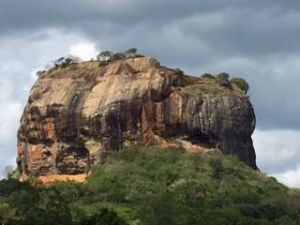 Within a couple of kilometres of Vil Uyana we succumb to a tourist outing via bullock cart, canoe and village visit. Novel as the bullock cart ride is we feel a bit of a lemon driving down the main road in it until we turn off onto a dirt track that leads us to the lake.
Within a couple of kilometres of Vil Uyana we succumb to a tourist outing via bullock cart, canoe and village visit. Novel as the bullock cart ride is we feel a bit of a lemon driving down the main road in it until we turn off onto a dirt track that leads us to the lake.
We’re surprised that having invented fibreglass that the original dugout design has prevailed – even more so when two are strapped together in catamaran layout and separated by a wooden box that we sit on. This doesn’t really replicate what we’d imagine to be an authentic ‘local villager’ experience.
Arriving at the village we’re already a little sceptical but are pleasantly surprised by the reception we get from a village mother, who proceeds to explain in English how they go about harvesting and using local produce. She then demonstrates the husking, cutting and shredding of coconut; cleaning and preparation of rice from its raw state; the milling of millet and grinding of a masala blend of onion, chillis and coconut on a stone.
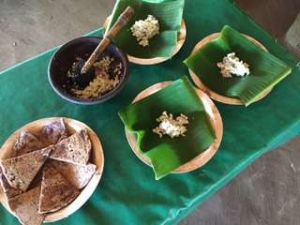 Having prepared the ingredients, she mixes the freshly ground flour with water and puts the paste directly on a hotplate to cook whilst she finishes blending the masala. Bearing in mind that this is all prepared in a rudimentary mud hut with palm leaf roof in near darkness, the result is a triumph of roti and fresh coconut salad that we’re presented with. The flavours that cascade around our mouths are testament to the ‘just picked’ freshness of the ingredients and makes us realise what we’ve dialled out of our lives by virtue of convenience.
Having prepared the ingredients, she mixes the freshly ground flour with water and puts the paste directly on a hotplate to cook whilst she finishes blending the masala. Bearing in mind that this is all prepared in a rudimentary mud hut with palm leaf roof in near darkness, the result is a triumph of roti and fresh coconut salad that we’re presented with. The flavours that cascade around our mouths are testament to the ‘just picked’ freshness of the ingredients and makes us realise what we’ve dialled out of our lives by virtue of convenience.
If we can string the video clips together that we took we’ll post this on You-Tube as it’s a real pleasure to watch and to be highly recommended if you have the chance. The initiative is run by the local tourism authority who take most of the $30 each that we paid for their ‘access permit’ to the villages and although the bullock owner gets a small amount for making us look like lemons, the village lady only survives on tips – worth remembering if you do ever experience the ‘Village Tour’. You can also take an extended tour that includes a lunch rather than just the snack we had.
It’s easy for us to dismiss these little cameos as tourist traps until we realise that the villager’s husband was recently bitten by snake in his own field and spent a month in hospital recovering – the harsh reality of their daily lives that we now walk away from with a wave. Anything that gives a little extra can make such a difference to these people.
Leaving the village behind us we now faced a four hour drive to Negombo on roads that are probably the worst we’ve encountered in Sri Lanka with the exception of our journey into the rainforest – every other road being of creditable standard; giving a smooth ride. We’re told they’ll be fixed in a month so you won’t have to endure the same, hopefully.
We drive past the Golden Temple in Dambulla and although, personally, the temple holds little appeal; the caves behind it in the hills are a magnificent achievement of Buddhist work in the most unusual of places – well worth a visit.
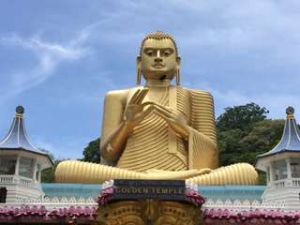 We last visited Negombo at the outset of our Sri Lanka tour two years ago, so were full of beans for the trip ahead. The beach was pristine, the hotel (Jetwing Blue, on this occasion) a large but interesting edifice with spacious rooms and bathrooms the size of a family car.
We last visited Negombo at the outset of our Sri Lanka tour two years ago, so were full of beans for the trip ahead. The beach was pristine, the hotel (Jetwing Blue, on this occasion) a large but interesting edifice with spacious rooms and bathrooms the size of a family car.
This time we’re at the end of our tour, tired and dusty from our bullock/village experience – and as a result Jetwing Beach just doesn’t create the same welcome (the hotel, not the staff who couldn’t be more helpful) as its other relatives have never failed to do.
Even our beer on the beach is constantly interrupted by the inevitable beach hawker.
A shame as it’s our last night – and for that matter the end of this particular blog – but there’s always room for change and improvement – as we keep telling ourselves; so let’s see how Sri Lanka moves on in the next couple of years as the last remaining northern corner of Jaffna opens its doors and rebuilds its infrastructure.
If you’ve never been to Sri Lanka, there’s something for everyone and its one of the kindest most hospitable destinations we know of where you can also virtually guarantee a suntan year-round.
Thank you for sticking with us on this particular journey.

 Let us plan your own inspiring journey to Sri Lanka and throughout Asia
Let us plan your own inspiring journey to Sri Lanka and throughout Asia
Why not download the TLC World guide brochure or give us a call today on 01202 030443, or simply click ‘enquire’ to submit your own personal itinerary request
![]()


